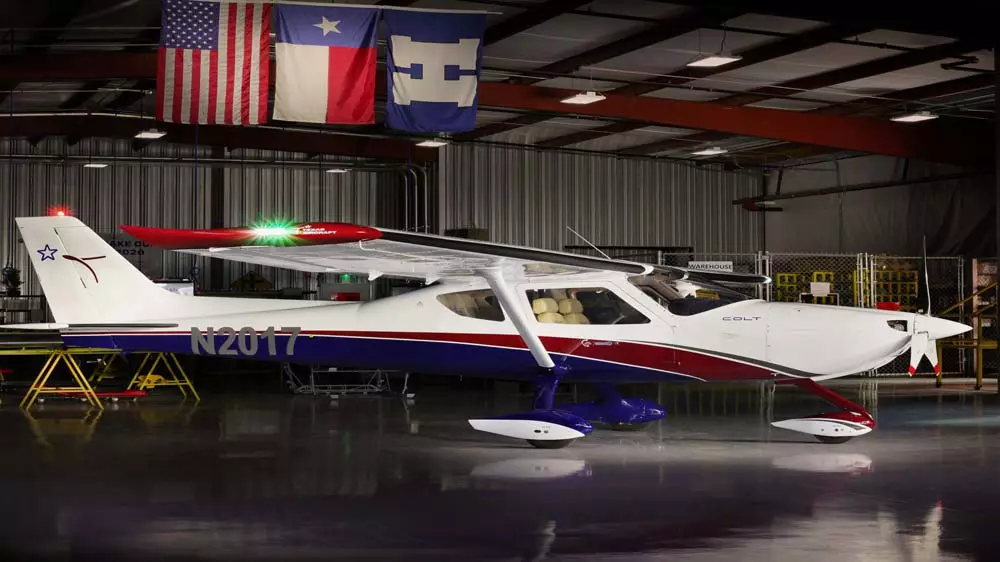British company Oxis says it's developed safe, high-density lithium-sulfur battery chemistry and will supply Texas Aircraft Manufacturing with a 90-kWh, next-gen battery pack to power the eColt, an electric aircraft with a two hour, 230-mile range.
Lithium-sulfur is one of the many battery technologies competing to supersede lithium-ion as the king of the next generation. In theory, the way it stores and releases energy offers an opportunity to create batteries that hold as much as five times more charge than lithium for a given size and weight of cell. Thanks to sulfur being a cheap and abundant raw material, these things also project to be much cheaper than current lithium cells.
In practice, they have had issues – notably with the old chestnut of dendrite formation, in which ion deposits on the anode grow into long spikes of conductive material that short circuit the cell and cause it to catch fire. The lithium-metal anodes also tend to degrade in less dangerous ways that eventually just make the batteries die.
In a piece written for IEEE Spectrum, Oxis head of battery development Mark Crittenden details how his team is addressing these problems with a thin layer of ceramic material at the anode, and it's resulting in high-energy cells with significantly longer lifespans than previous Li-S designs.
"Typical lithium-ion designs can hold from 100 to 265 Wh/kg, depending on the other performance characteristics for which it has been optimized, such as peak power or long life," writes Crittenden. "Oxis recently developed a prototype lithium-sulfur pouch cell that proved capable of 470 Wh/kg, and we expect to reach 500 Wh/kg within a year. And because the technology is still new and has room for improvement, it’s not unreasonable to anticipate 600 Wh/kg by 2025."
Volumetric density is looking promising too, with future targets in excess of 800 Wh/l pointing towards some seriously stealth long-range ebikes that are hopefully not too far down the track.
In terms of lifespan, it seems things still aren't great. "Within the next two years we aim to double the current cycle life to achieve upwards of 500 cycles," reads the Oxis website. It's worth remembering, though, that longer-lasting batteries need charging less often; if a Li-S cell can make your phone last two days instead of one, then 500 charges might last you more than three years.
Still, the cells are proving puncture-safe, pressure-tolerant and have the additional advantage that they can be used across the entire charge range from 0-100 percent, where lithium-ion cells are often kept between 10-90 percent of their full charge range in order to avoid overstressing them.

The pack Oxis is presenting to Texas Aircraft Manufacturing for use in the eColt is a 90-kWh job with an energy density of 400 Wh/kg. This makes it some 40 percent lighter than a comparable Li-ion pack. This is Oxis' high-power pack, designed for high charge and discharge rates at the expense of some energy density.
Texas and Oxis both have manufacturing facilities in Brazil, as do powertrain supplier WEG and also AKAER Group, who will provide the battery management system, so it'll be a Brazilian project.
The Colt S-LSA is designed to be a solid training aircraft for commercial airline pilots, and the eColt is slated to become an efficient, clean training platform for new pilots that's also much cheaper to run thanks to its simple electric powertrain.
Oxis is looking at other applications for its high-density cells, particularly in the high-altitude pseudo-satellite market. It also feels it can compete in the eVTOL market, and is working on other fixed-wing electric plane projects including one with Bye Aerospace in Colorado. It's also working on bus and truck solutions.
Its electrolyte and cathode active materials manufacturing sites in Wales are currently being established, and it plans to begin volume cell manufacturing at a Mercedes-owned site in Minas Gerais, Brazil, around 2023. This site will enable the production of up to five million cells a year in its first stage.
Source: Oxis Energy via IEEE Spectrum





